Piyush Lalsingh Ratnu / 个人资料
- 信息
|
1 年
经验
|
0
产品
|
0
演示版
|
|
0
工作
|
0
信号
|
0
订阅者
|
Piyush Ratnu is an independent forex market analyst & trader with core expertise in XAUUSD/Spot Gold.
With more than 15 years of experience as a Financial Market Analyst, Piyush Ratnu held the responsibility of developing and refining a series of algorithms & analytic tools to simplify the trading processes. His tools and algorithms were defined and rated as “unlike tools seen in the market before, extensively designed and most importantly, functional and logical” by some of the top financial companies and analysts at New York, London and Dubai.
Piyush Ratnu holds an experience of 290,000 trades, 1,790,000 pips calculated with a remarkable trading execution rate of 2 trades per second in an ideal scenario with profit booking in less than 8 seconds tracing 60+ pips/trade, as per audited and verified track record of last 10 years.
Core strength:
Economics, Economic Data Analysis, Spot Gold (XAUUSD), USD Majors, SR MTF Range Trading, Chart Patterns,
Volume Trading, Day Trading & Position Trading
Trading style
Fundamental based Intra-day trading.
Analysis based on proprietary algorithm + 90+ parameters.
Core focus: US Futures and XAUUSD | Spot Gold
Motto
Plan your trade, and then trade your plan!
Detailed research: https://www.reddit.com/r/prgoldanalysis
Track Record since 2021: https://bit.ly/PRxauusdAnalysis
MyFxBook:
X.com: https://x.com/piyushratnu
Insta: https://www.instagram.com/piyushratnuofficial
Connect for more details:
Telegram: https://www.T.me/PiyushRatnuOfficial
Risk Disclaimer:
Trading in foreign exchange (“Forex”) on margins entails high risk and is not suitable for all investors. Past performance is not an indication of future results. In this case, as well, the high degree of leverage can act both against you and for you. Trading foreign exchange, indices and commodities, on margin, carries a high level of risk and may not be suitable for all individuals.
The information made available by Piyush Ratnu is for your general information only and is not intended to address your particular requirements. In particular, the information does not constitute any form of advice or recommendation and is not intended to be relied upon by users in making, or refraining from making, any investment decisions.
Piyush Ratnu does not in any way guarantee that this information is free from mistakes, errors, or material misstatements. It also does not guarantee that this information is of a timely nature. Investing in Open Markets involves a great deal of risk, including the loss of all or a portion of your investment, as well as emotional distress. All risks, losses and costs associated with investing, including total loss of principal, are your responsibility. The views and opinions expressed in this article are those of the authors and do not necessarily reflect the official policy or position(s) of Piyush Ratnu.
With more than 15 years of experience as a Financial Market Analyst, Piyush Ratnu held the responsibility of developing and refining a series of algorithms & analytic tools to simplify the trading processes. His tools and algorithms were defined and rated as “unlike tools seen in the market before, extensively designed and most importantly, functional and logical” by some of the top financial companies and analysts at New York, London and Dubai.
Piyush Ratnu holds an experience of 290,000 trades, 1,790,000 pips calculated with a remarkable trading execution rate of 2 trades per second in an ideal scenario with profit booking in less than 8 seconds tracing 60+ pips/trade, as per audited and verified track record of last 10 years.
Core strength:
Economics, Economic Data Analysis, Spot Gold (XAUUSD), USD Majors, SR MTF Range Trading, Chart Patterns,
Volume Trading, Day Trading & Position Trading
Trading style
Fundamental based Intra-day trading.
Analysis based on proprietary algorithm + 90+ parameters.
Core focus: US Futures and XAUUSD | Spot Gold
Motto
Plan your trade, and then trade your plan!
Detailed research: https://www.reddit.com/r/prgoldanalysis
Track Record since 2021: https://bit.ly/PRxauusdAnalysis
MyFxBook:
X.com: https://x.com/piyushratnu
Insta: https://www.instagram.com/piyushratnuofficial
Connect for more details:
Telegram: https://www.T.me/PiyushRatnuOfficial
Risk Disclaimer:
Trading in foreign exchange (“Forex”) on margins entails high risk and is not suitable for all investors. Past performance is not an indication of future results. In this case, as well, the high degree of leverage can act both against you and for you. Trading foreign exchange, indices and commodities, on margin, carries a high level of risk and may not be suitable for all individuals.
The information made available by Piyush Ratnu is for your general information only and is not intended to address your particular requirements. In particular, the information does not constitute any form of advice or recommendation and is not intended to be relied upon by users in making, or refraining from making, any investment decisions.
Piyush Ratnu does not in any way guarantee that this information is free from mistakes, errors, or material misstatements. It also does not guarantee that this information is of a timely nature. Investing in Open Markets involves a great deal of risk, including the loss of all or a portion of your investment, as well as emotional distress. All risks, losses and costs associated with investing, including total loss of principal, are your responsibility. The views and opinions expressed in this article are those of the authors and do not necessarily reflect the official policy or position(s) of Piyush Ratnu.
Piyush Lalsingh Ratnu
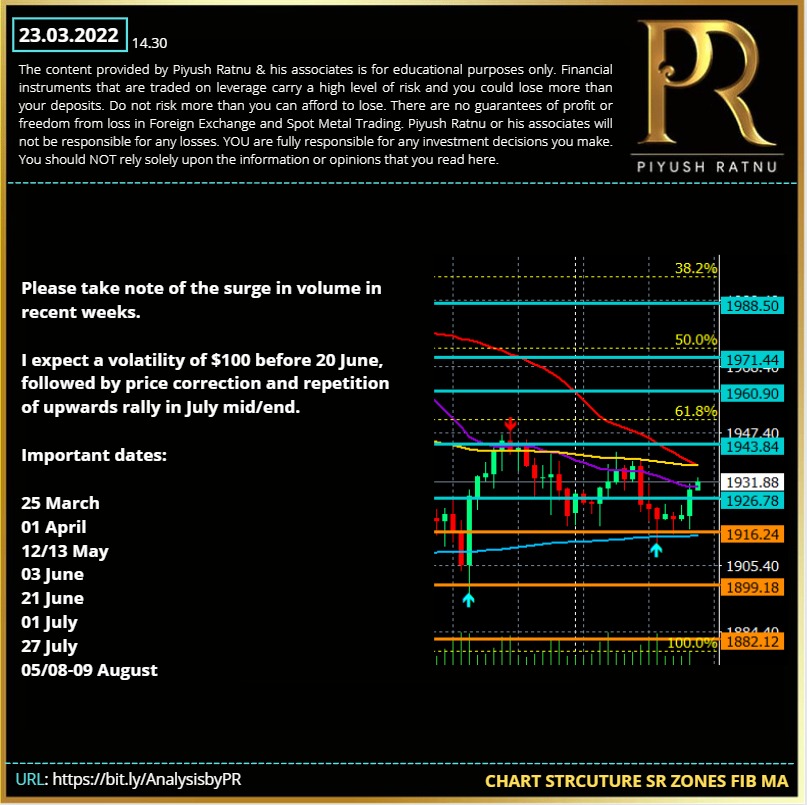
23.03.2022 | Chart Structure SR Zone Fib MA |Important Dates | Spot Gold Analysis | PR Gold Analysis | XAUUSD Analysis
Join TELEGRAM channel for latest updates and market analysis:
If you are on Telegram,
Copy this url and paste in browser: https://bit.ly/AnalysisbyPR
#PiyushRatnu #BullionTrading #Trading #Dubai
Join TELEGRAM channel for latest updates and market analysis:
If you are on Telegram,
Copy this url and paste in browser: https://bit.ly/AnalysisbyPR
#PiyushRatnu #BullionTrading #Trading #Dubai

Piyush Lalsingh Ratnu

23.03.2022 | Chart Structure SR Zone Fib MA | Spot Gold Analysis | PR Gold Analysis | XAUUSD Analysis
Join TELEGRAM channel for latest updates and market analysis:
If you are on Telegram,
Copy this url and paste in browser: https://bit.ly/AnalysisbyPR
#PiyushRatnu #BullionTrading #Trading #Dubai
Join TELEGRAM channel for latest updates and market analysis:
If you are on Telegram,
Copy this url and paste in browser: https://bit.ly/AnalysisbyPR
#PiyushRatnu #BullionTrading #Trading #Dubai

Piyush Lalsingh Ratnu
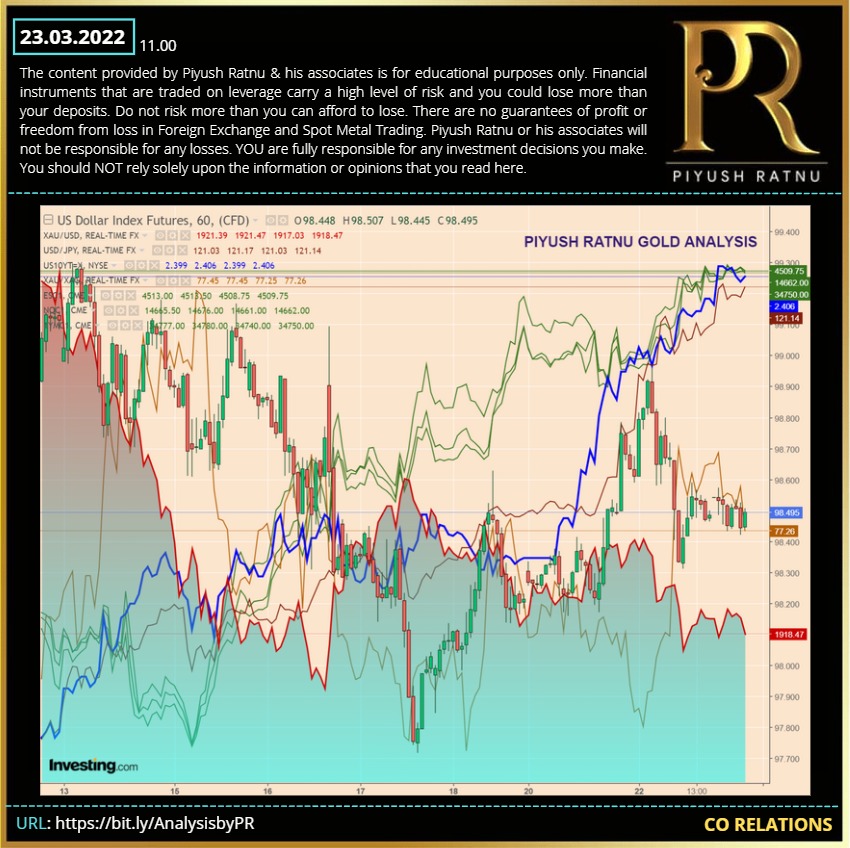
23.03.2022 | Co-relations | Spot Gold Analysis | PR Gold Analysis | XAUUSD Analysis
Join TELEGRAM channel for latest updates and market analysis:
If you are on Telegram,
Copy this url and paste in browser: https://bit.ly/AnalysisbyPR
#PiyushRatnu #BullionTrading #Trading #Dubai
Join TELEGRAM channel for latest updates and market analysis:
If you are on Telegram,
Copy this url and paste in browser: https://bit.ly/AnalysisbyPR
#PiyushRatnu #BullionTrading #Trading #Dubai

Piyush Lalsingh Ratnu
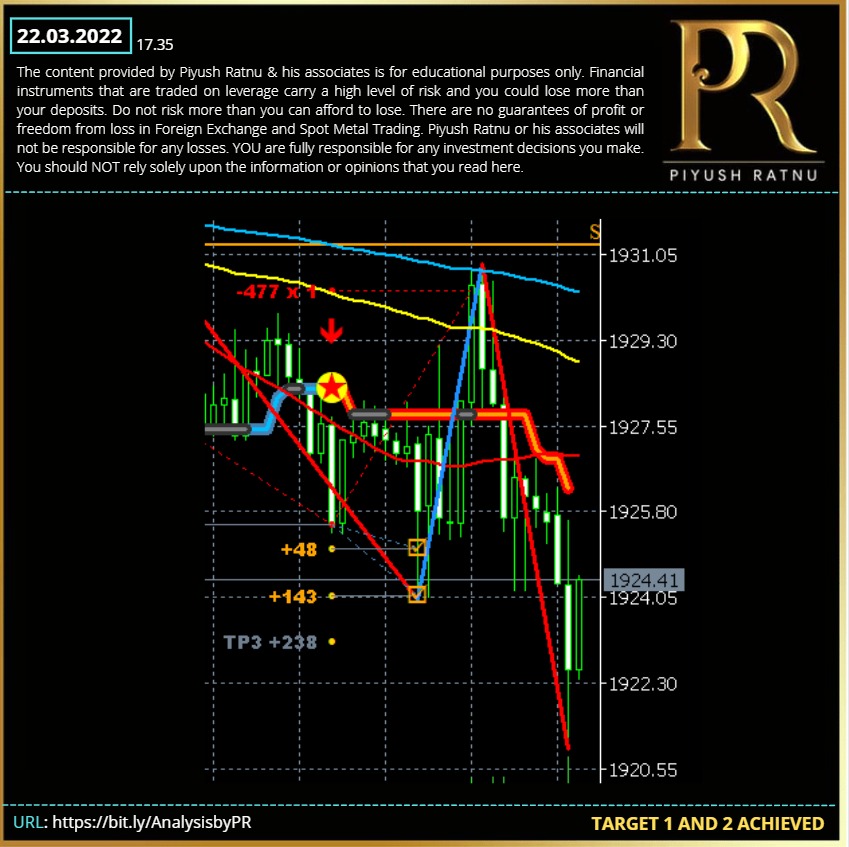
22.03.2022 |Sell price target 1 and 2 achieved | Spot Gold Analysis | XAUUSD Analysis | PR Gold Analysis
Join TELEGRAM channel for latest updates and market analysis:
If you are on Telegram,
Copy this url and paste in browser: https://bit.ly/AnalysisbyPR
#PiyushRatnu #BullionTrading #Trading #Dubai
Join TELEGRAM channel for latest updates and market analysis:
If you are on Telegram,
Copy this url and paste in browser: https://bit.ly/AnalysisbyPR
#PiyushRatnu #BullionTrading #Trading #Dubai

Piyush Lalsingh Ratnu
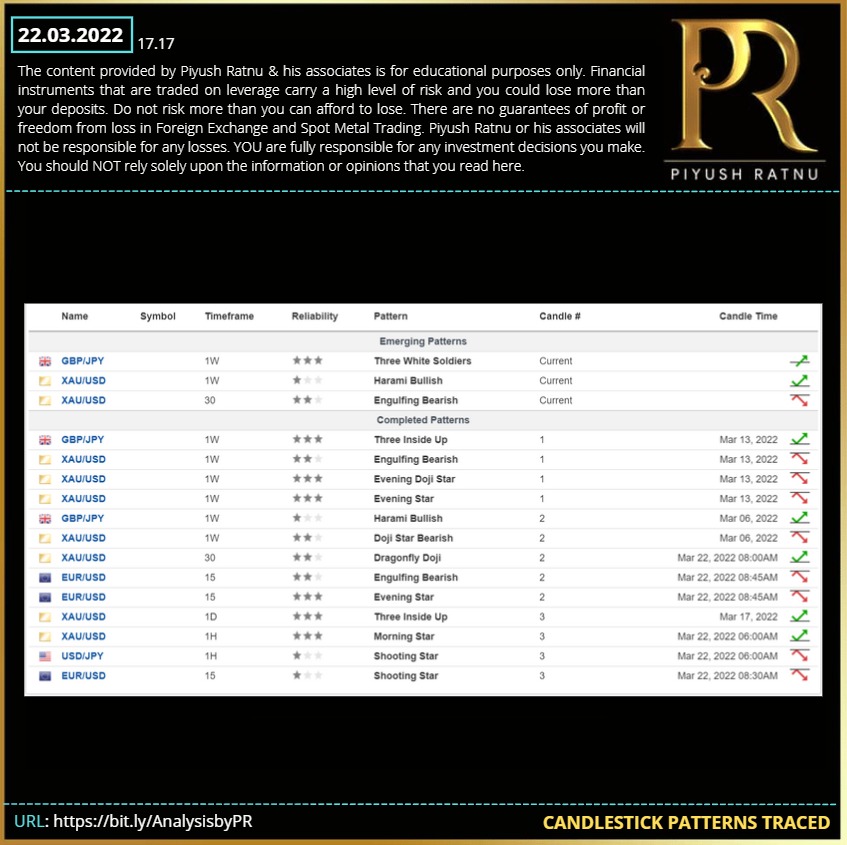
22.03.2022 | Candlestick patterns traced | Spot Gold Analysis | XAUUSD Analysis | PR Gold Analysis
Join TELEGRAM channel for latest updates and market analysis:
If you are on Telegram,
Copy this url and paste in browser: https://bit.ly/AnalysisbyPR
#PiyushRatnu #BullionTrading #Trading #Dubai
Join TELEGRAM channel for latest updates and market analysis:
If you are on Telegram,
Copy this url and paste in browser: https://bit.ly/AnalysisbyPR
#PiyushRatnu #BullionTrading #Trading #Dubai

Piyush Lalsingh Ratnu

22.03.2022 | PRMS | Spot Gold Analysis | XAUUSD Analysis | PR Gold Analysis
Join TELEGRAM channel for latest updates and market analysis:
If you are on Telegram,
Copy this url and paste in browser: https://bit.ly/AnalysisbyPR
#PiyushRatnu #BullionTrading #Trading #Dubai
Join TELEGRAM channel for latest updates and market analysis:
If you are on Telegram,
Copy this url and paste in browser: https://bit.ly/AnalysisbyPR
#PiyushRatnu #BullionTrading #Trading #Dubai

Piyush Lalsingh Ratnu
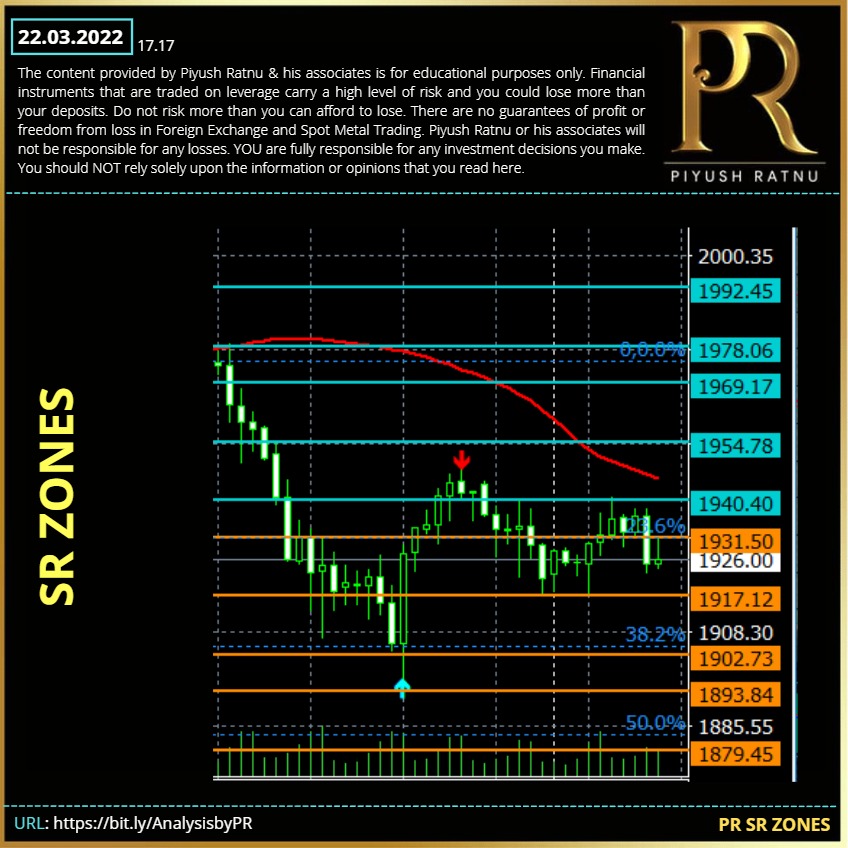
22.03.2022 | PR SR Zone | Spot Gold Analysis | XAUUSD Analysis | PR Gold Analysis
Join TELEGRAM channel for latest updates and market analysis:
If you are on Telegram,
Copy this url and paste in browser: https://bit.ly/AnalysisbyPR
#PiyushRatnu #BullionTrading #Trading #Dubai
Join TELEGRAM channel for latest updates and market analysis:
If you are on Telegram,
Copy this url and paste in browser: https://bit.ly/AnalysisbyPR
#PiyushRatnu #BullionTrading #Trading #Dubai

Piyush Lalsingh Ratnu

22.03.2022 | Co-relations | Spot Gold Analysis | PR Gold Analysis | XAUUSD Analysis
Join TELEGRAM channel for latest updates and market analysis:
If you are on Telegram,
Copy this url and paste in browser: https://bit.ly/AnalysisbyPR
#PiyushRatnu #BullionTrading #Trading #Dubai
Join TELEGRAM channel for latest updates and market analysis:
If you are on Telegram,
Copy this url and paste in browser: https://bit.ly/AnalysisbyPR
#PiyushRatnu #BullionTrading #Trading #Dubai

Piyush Lalsingh Ratnu
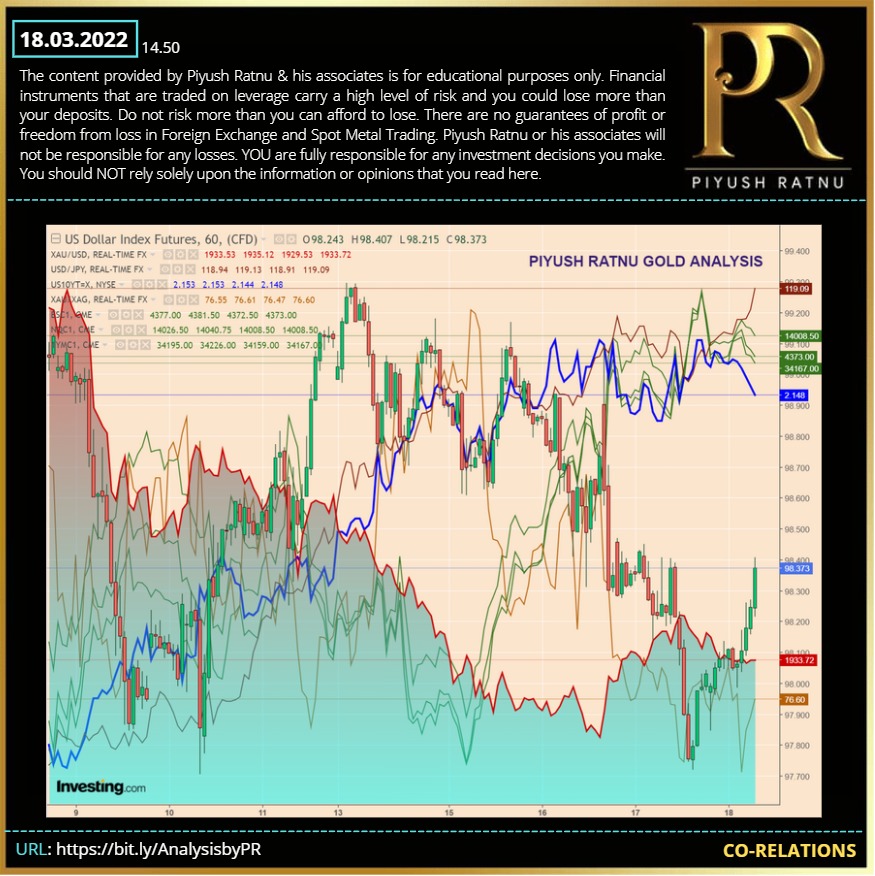
18.03.2022 | Co-relations | Spot Gold Analysis | PR Gold Analysis | XAUUSD Analysis
Join TELEGRAM channel for latest updates and market analysis:
If you are on Telegram,
Copy this url and paste in browser: https://bit.ly/AnalysisbyPR
#PiyushRatnu #BullionTrading #Trading #Dubai
Join TELEGRAM channel for latest updates and market analysis:
If you are on Telegram,
Copy this url and paste in browser: https://bit.ly/AnalysisbyPR
#PiyushRatnu #BullionTrading #Trading #Dubai

Piyush Lalsingh Ratnu

18.03.2022 | SR Zone | SETD1 200 50 09 09 | Spot Gold Analysis | XAUUSD Analysis | PR Gold Analysis
Join TELEGRAM channel for latest updates and market analysis:
If you are on Telegram,
Copy this url and paste in browser: https://bit.ly/AnalysisbyPR
#PiyushRatnu #BullionTrading #Trading #Dubai
Join TELEGRAM channel for latest updates and market analysis:
If you are on Telegram,
Copy this url and paste in browser: https://bit.ly/AnalysisbyPR
#PiyushRatnu #BullionTrading #Trading #Dubai

Piyush Lalsingh Ratnu

17.03.2022 | A Pattern: 1888 - 2070 - 1888 Zone | Spot Gold Analysis | XAUUSD Analysis | PR Gold Analysis
We alerted the rise in advance with facts on 17.02.2022.
Join TELEGRAM channel for latest updates and market analysis:
If you are on Telegram,
Copy this url and paste in browser: https://bit.ly/AnalysisbyPR
#PiyushRatnu #BullionTrading #Trading #Dubai
We alerted the rise in advance with facts on 17.02.2022.
Join TELEGRAM channel for latest updates and market analysis:
If you are on Telegram,
Copy this url and paste in browser: https://bit.ly/AnalysisbyPR
#PiyushRatnu #BullionTrading #Trading #Dubai

Piyush Lalsingh Ratnu

As published by me in my analysis dated 17.02.2022: HIGHER GOLD prices were on the cards, and post FOMC: GOLD crossed the mark of 1940 after crashing till 1894.
We alerted the rise in advance with facts on 17.02.2022.
Join TELEGRAM channel for latest updates and market analysis:
If you are on Telegram,
Copy this url and paste in browser: https://bit.ly/AnalysisbyPR
#PiyushRatnu #BullionTrading #Trading #Dubai
We alerted the rise in advance with facts on 17.02.2022.
Join TELEGRAM channel for latest updates and market analysis:
If you are on Telegram,
Copy this url and paste in browser: https://bit.ly/AnalysisbyPR
#PiyushRatnu #BullionTrading #Trading #Dubai

Piyush Lalsingh Ratnu

17.03.2022 |Buy Target 1 2 3 Achieved | PR Gold Analysis | XAUUSD Analysis | Spot Gold Analysis
Join TELEGRAM channel for latest updates and market analysis:
If you are on Telegram,
Copy this url and paste in browser: https://bit.ly/AnalysisbyPR
#PiyushRatnu #BullionTrading #Trading #Dubai
Join TELEGRAM channel for latest updates and market analysis:
If you are on Telegram,
Copy this url and paste in browser: https://bit.ly/AnalysisbyPR
#PiyushRatnu #BullionTrading #Trading #Dubai

Piyush Lalsingh Ratnu
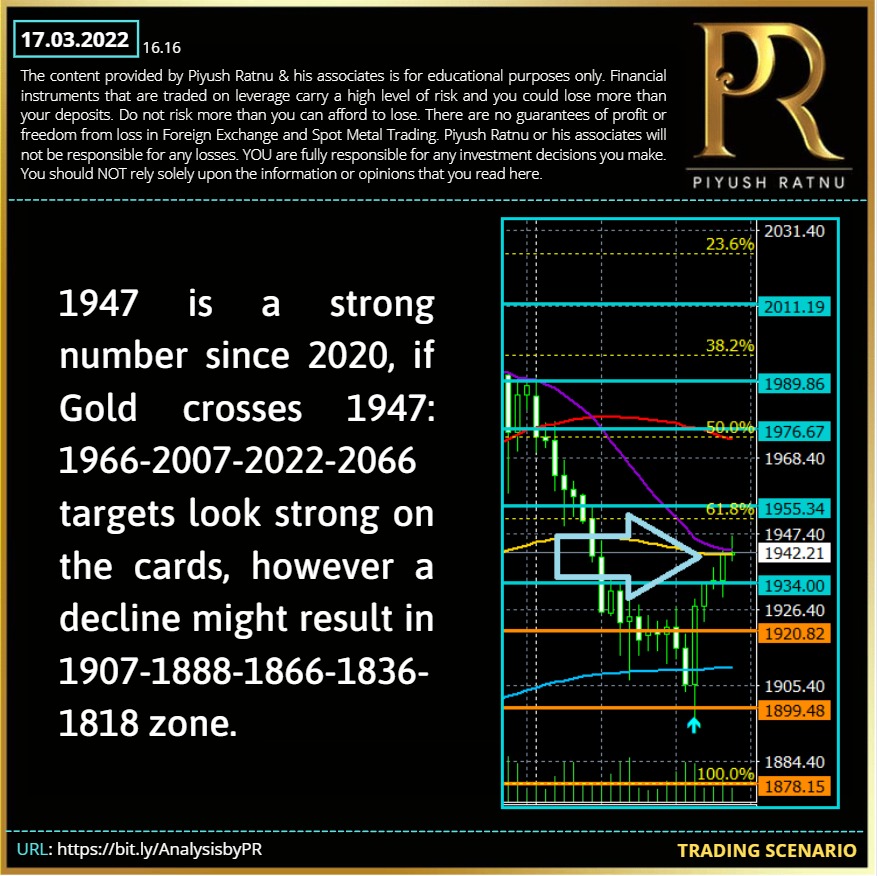
17.03.2022 |Trading Scenarios | PR Gold Analysis | XAUUSD Analysis | Spot Gold Analysis
Join TELEGRAM channel for latest updates and market analysis:
If you are on Telegram,
Copy this url and paste in browser: https://bit.ly/AnalysisbyPR
#PiyushRatnu #BullionTrading #Trading #Dubai
Join TELEGRAM channel for latest updates and market analysis:
If you are on Telegram,
Copy this url and paste in browser: https://bit.ly/AnalysisbyPR
#PiyushRatnu #BullionTrading #Trading #Dubai

Piyush Lalsingh Ratnu
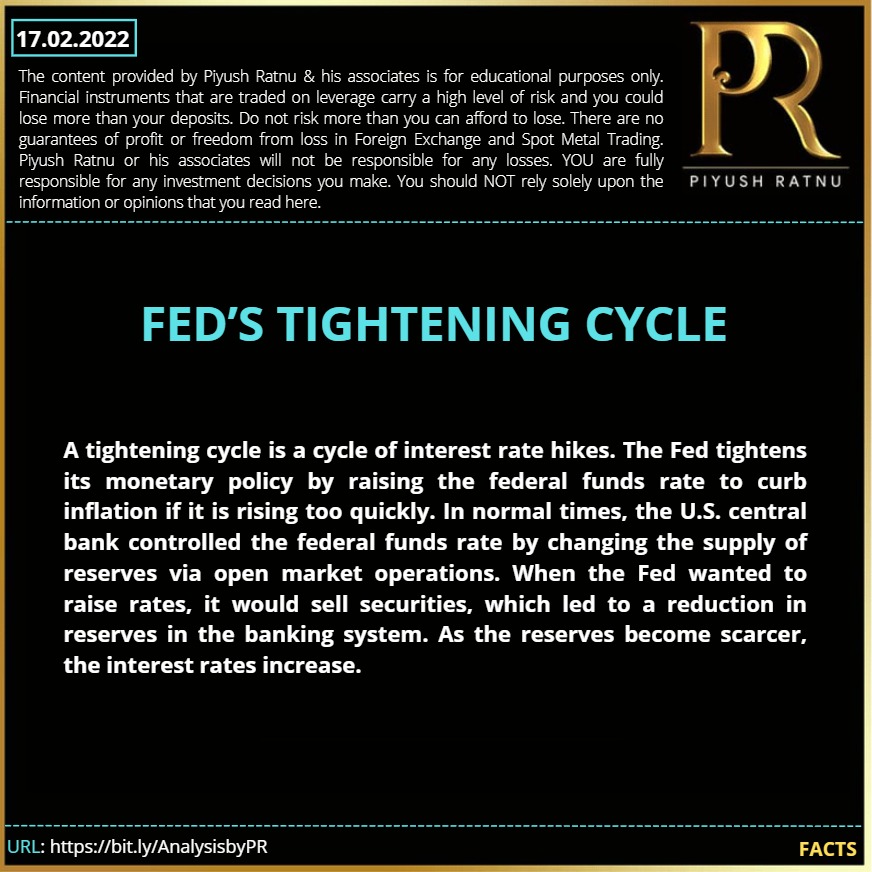
17.02.2022 | Facts | PR Gold Analysis | XAUUSD Analysis
Join TELEGRAM channel for latest updates and market analysis:
If you are on Telegram,
Copy this url and paste in browser: https://bit.ly/AnalysisbyPR
#PiyushRatnu #BullionTrading #Trading #Dubai
Join TELEGRAM channel for latest updates and market analysis:
If you are on Telegram,
Copy this url and paste in browser: https://bit.ly/AnalysisbyPR
#PiyushRatnu #BullionTrading #Trading #Dubai

Piyush Lalsingh Ratnu

17.02.2022 | Facts | PR Gold Analysis | XAUUSD Analysis
Join TELEGRAM channel for latest updates and market analysis:
If you are on Telegram,
Copy this url and paste in browser: https://bit.ly/AnalysisbyPR
#PiyushRatnu #BullionTrading #Trading #Dubai
Join TELEGRAM channel for latest updates and market analysis:
If you are on Telegram,
Copy this url and paste in browser: https://bit.ly/AnalysisbyPR
#PiyushRatnu #BullionTrading #Trading #Dubai

Piyush Lalsingh Ratnu
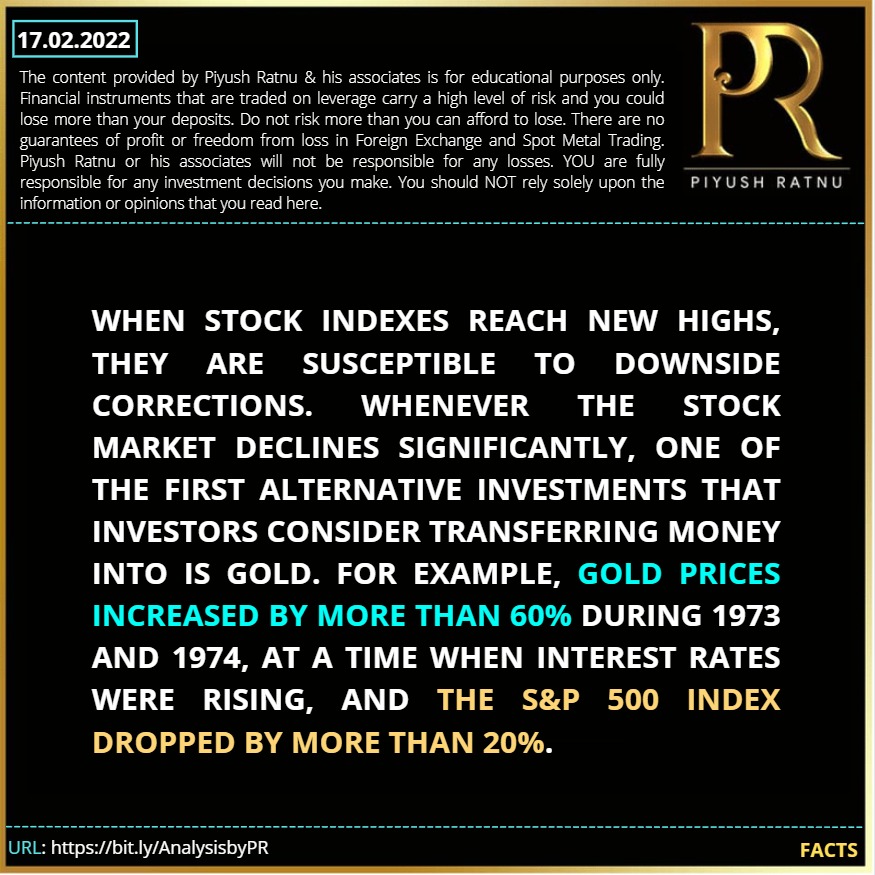
17.02.2022 | Facts | PR Gold Analysis | XAUUSD Analysis
Join TELEGRAM channel for latest updates and market analysis:
If you are on Telegram,
Copy this url and paste in browser: https://bit.ly/AnalysisbyPR
#PiyushRatnu #BullionTrading #Trading #Dubai
Join TELEGRAM channel for latest updates and market analysis:
If you are on Telegram,
Copy this url and paste in browser: https://bit.ly/AnalysisbyPR
#PiyushRatnu #BullionTrading #Trading #Dubai

Piyush Lalsingh Ratnu
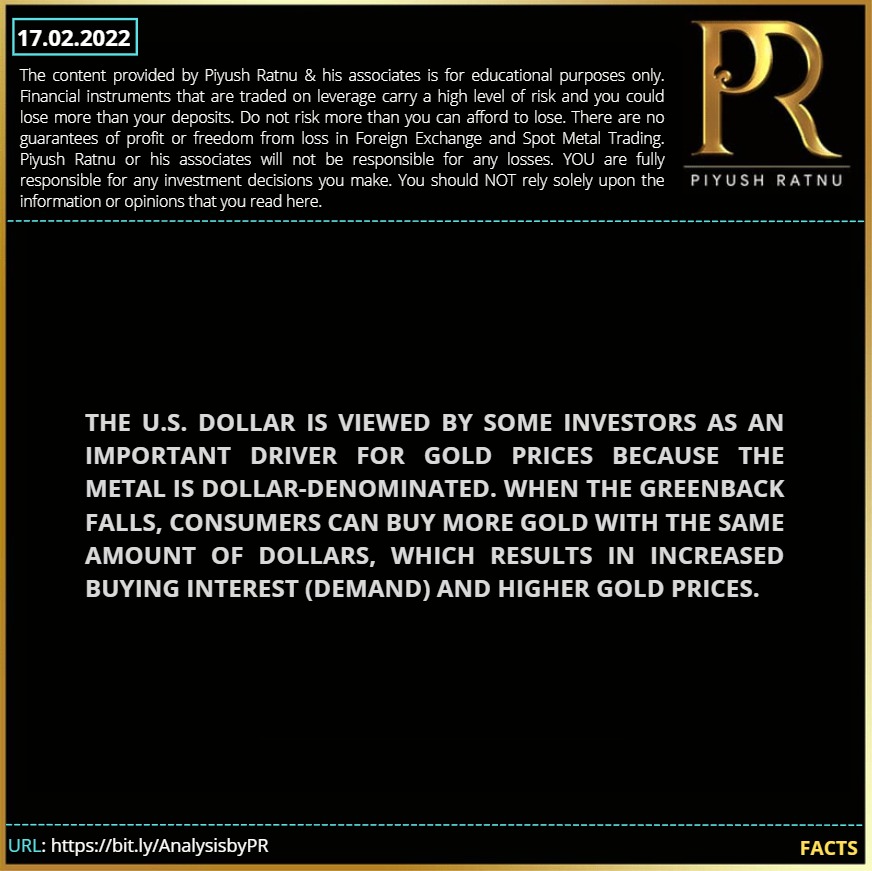
17.02.2022 | Facts | PR Gold Analysis | XAUUSD Analysis
Join TELEGRAM channel for latest updates and market analysis:
If you are on Telegram,
Copy this url and paste in browser: https://bit.ly/AnalysisbyPR
#PiyushRatnu #BullionTrading #Trading #Dubai
Join TELEGRAM channel for latest updates and market analysis:
If you are on Telegram,
Copy this url and paste in browser: https://bit.ly/AnalysisbyPR
#PiyushRatnu #BullionTrading #Trading #Dubai

Piyush Lalsingh Ratnu

17.02.2022 | Facts | PR Gold Analysis | XAUUSD Analysis
Join TELEGRAM channel for latest updates and market analysis:
If you are on Telegram,
Copy this url and paste in browser: https://bit.ly/AnalysisbyPR
#PiyushRatnu #BullionTrading #Trading #Dubai
Join TELEGRAM channel for latest updates and market analysis:
If you are on Telegram,
Copy this url and paste in browser: https://bit.ly/AnalysisbyPR
#PiyushRatnu #BullionTrading #Trading #Dubai

Piyush Lalsingh Ratnu

17.02.2022 | Facts | The World's Most Powerful Militaries | PR Gold Analysis | XAUUSD Analysis
Join TELEGRAM channel for latest updates and market analysis:
If you are on Telegram,
Copy this url and paste in browser: https://bit.ly/AnalysisbyPR
#PiyushRatnu #BullionTrading #Trading #Dubai
Join TELEGRAM channel for latest updates and market analysis:
If you are on Telegram,
Copy this url and paste in browser: https://bit.ly/AnalysisbyPR
#PiyushRatnu #BullionTrading #Trading #Dubai

: